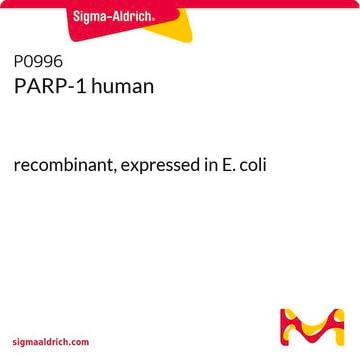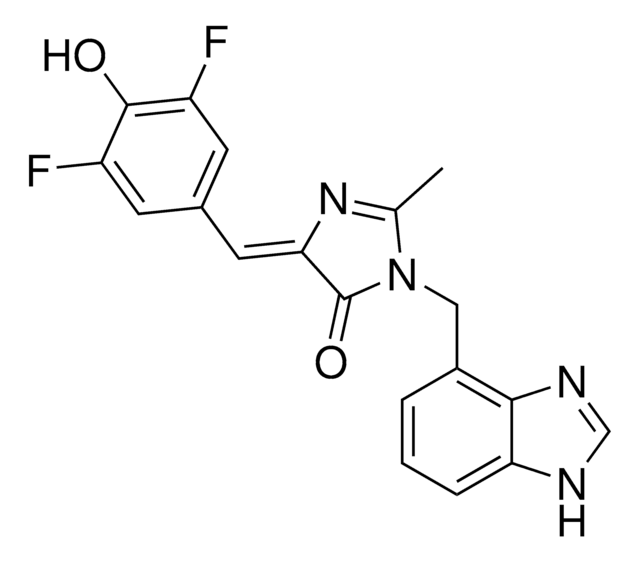SRP0192
PARP1 Active human
recombinant, expressed in baculovirus infected insect cells, ≥80% (SDS-PAGE)
Sinonimo/i:
ADPRT, NAD(+) ADP-ribosyltransferase 1, Poly (ADP-ribose) Polymerase 1
About This Item
Prodotti consigliati
Origine biologica
human
Ricombinante
expressed in baculovirus infected insect cells
Saggio
≥80% (SDS-PAGE)
Forma fisica
aqueous solution
PM
140 kDa
Confezionamento
pkg of 10 and 20 μg
Produttore/marchio commerciale
Sigma-Aldrich
Condizioni di stoccaggio
avoid repeated freeze/thaw cycles
Concentrazione
>0.02 mg/mL
tecniche
inhibition assay: suitable
N° accesso NCBI
N° accesso UniProt
applicazioni
life science and biopharma
Condizioni di spedizione
dry ice
Temperatura di conservazione
−70°C
Informazioni sul gene
human ... PARP1(142)
Descrizione generale
Human PARP1 (GenBank Accession No. NM_001618), full length with N-terminal GST tag, MW = 140 kDa, expressed in a Baculovirus infected Sf9 cell expression system. Poly [ADP-ribose] polymerase 1 (PARP1) belongs to the DNA-dependent nuclear enzyme superfamily. Its structure includes an N-terminal with three zinc finger DNA-binding domains, an auto-modification domain with BRCT motif and a WGR domain having conserved tryptophan, glycine, and arginine residues, and a C-terminal catalytic domain with PARP signature sequence.
Applicazioni
Azioni biochim/fisiol
Definizione di unità
Stato fisico
Nota sulla preparazione
Codice della classe di stoccaggio
10 - Combustible liquids
Classe di pericolosità dell'acqua (WGK)
WGK 1
Punto d’infiammabilità (°F)
Not applicable
Punto d’infiammabilità (°C)
Not applicable
Certificati d'analisi (COA)
Cerca il Certificati d'analisi (COA) digitando il numero di lotto/batch corrispondente. I numeri di lotto o di batch sono stampati sull'etichetta dei prodotti dopo la parola ‘Lotto’ o ‘Batch’.
Possiedi già questo prodotto?
I documenti relativi ai prodotti acquistati recentemente sono disponibili nell’Archivio dei documenti.
Il team dei nostri ricercatori vanta grande esperienza in tutte le aree della ricerca quali Life Science, scienza dei materiali, sintesi chimica, cromatografia, discipline analitiche, ecc..
Contatta l'Assistenza Tecnica.






